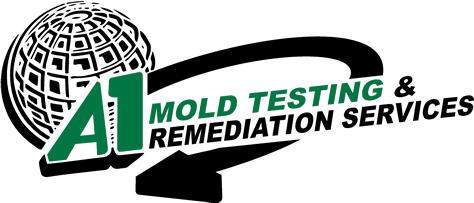Bleach and other no nos
Let’s Talk about Bleach, Baby (and other Misconceptions about Mold Cleanup)
 Mold is widely misunderstood.
Mold is widely misunderstood.
So are mold cleanup strategies.
That’s makes sense, right?
After all, if you don’t understand mold, how can you possibly hope to clean it up and keep it out of your house for good?
Is mold a type of plant? Is it a bacterial growth? Is it a type of algae or lichen?
No, no, and no.
It’s a fungi.
Does bleach kill mold ? Very few.
But on porous surfaces like wood or drywall, bleach doesn’t remove the mold, mold spores, or mold fragments , and that’s a problem.
Bleach is Not an Ideal Chemical for Mold Cleanup
If you Google “mold cleanup,” you’re guaranteed to find websites that recommend bleach as the best mold cleanup solution.
It’s not true.
Let’s start with some of the problems with bleach:
- It’s downright dangerous to use. Bleach can burn your skin, ruin your clothes, and destroy your personal property.
- Bleach fumes, combined with the wrong product at the wrong time, can produce life-threatening fumes, specifically chlorine gas, which can cause all sorts of awful health problems.
- Bleach can burn your skin, especially if you splash some onto exposed skin and fail to rinse it off immediately.
- Bleach only addresses visible contaminants. It doesn’t do anything at all to problems you can’t see and touch.
Most important?
- Bleach CANNOT kill all molds. It cannot kill mold or mold spores on porous materials like drywall or wood. After you wipe away the surface mold, the roots of the mold will still be embedded in porous materials and may eventually regrow.
Still sound like the kind of product you want to use in your house?
Sure, we use diluted bleach all the time in our homes and offices. Hospitals trust bleach mixtures to destroy countless germs and viruses.
But mold is a different sort of problem. That means mold requires different cleanup strategies.
Basic Mold Removal … and We Do Mean Removal
There’s just one way to get mold out of a contaminated structure.
Guess what? That doesn’t include wiping it with bleach or any other chemical.
In some cases, you can’t get mold out of porous materials like drywall or carpet. So, the mold – as well as permeable mold-affected structural elements – must be removed from the building.
Most Midwestern structures use lumber frames and drywall. If the conditions are suitable for mold, both of these materials are vulnerable to mold colonies.
Drywall paper is, by nature, a substance that makes a nice home for spores … and possible mold.
Lumber is wood. When it’s wet, wood is delicious, multi-layered, fibrous food for mold.
Scrubbing some bleach onto these dense materials might make you feel a bit better. But don’t kid yourself. In order to do the job right, these kinds of mold-infested bits have to be removed, under industrial-grade filtration, and with proper protective gear.
Correct Process = Mold Eliminated
Dave Bayne is the general manager and owner of A1 Mold Testing & Remediation. He often has conversations with customers who tried to use bleach for their mold problems … and failed.
“Everyone thinks that bleach kills everything,” says Bayne. “Scientifically speaking, bleach kills very few molds. We are not in the business to kill mold — we are in the business to remove mold. Dead spores are still allergenic and simply killing mold does not solve the problem.”
He continues by saying, “Treating a mold issue by using bleach is like you punching someone in the belly thinking that you’re going to knock them out, however, all you are really doing is making them mad. The same goes for treating mold with bleach – the mold may fight back by unleashing toxins that can harm your family’s health.”
When A1 Mold Testing & Remediation crews arrive, we use strict procedures to isolate moldy areas from the rest of the structure.
Then, we physically remove as much mold and spore debris as possible.
Then, finally, we apply anti-fungal spray that kills any leftover spores. In instances where we can’t remove affected lumber (for instance, in load-bearing walls), we coat the treated lumber with an anti-fungal sealant to prevent further growth.
It’s not an easy process, but it’s one that works. Unlike bleach.
Call or email today and put our A1 superheroes to work for your family’s health and peace of mind.







